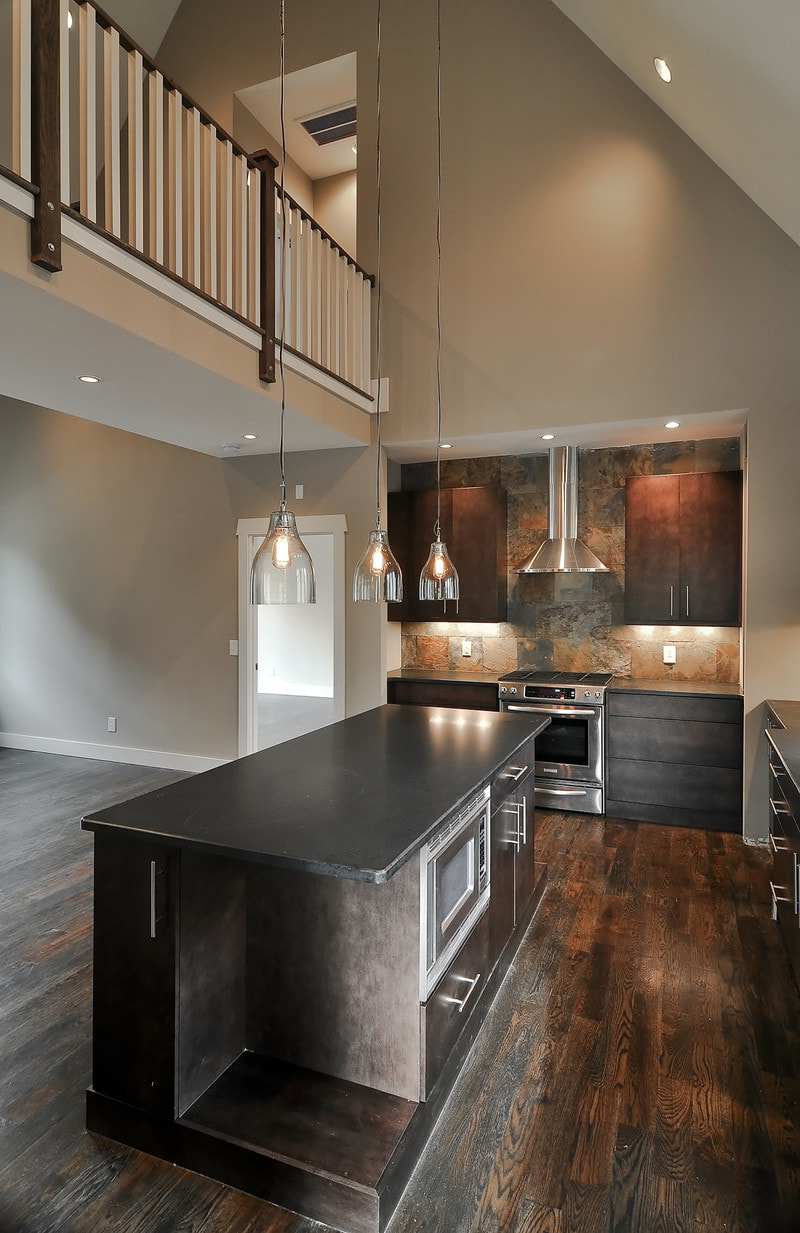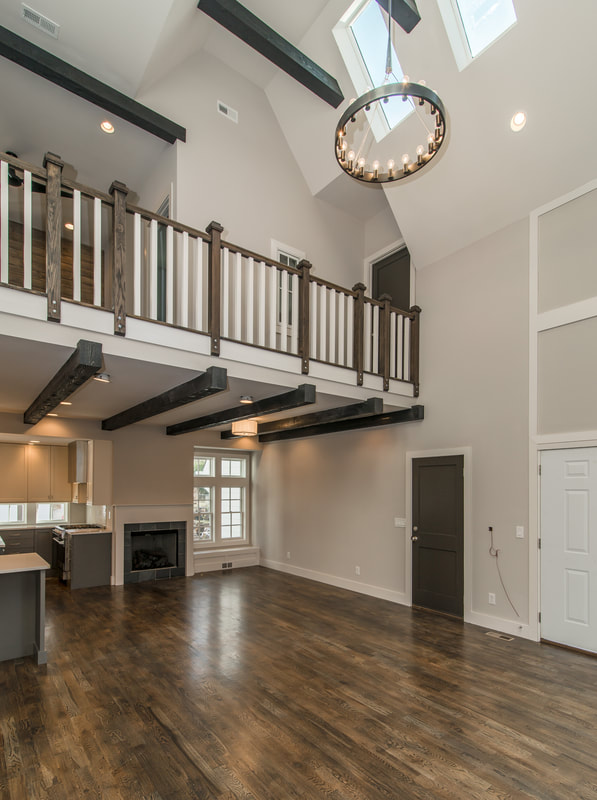|
We---and most homebuyers, it seems---are nuts for vaulted spaces. However, since space in Nashville is at a premium and many lots these days are narrow as can be, we also have to be nuts about two- and sometimes three-story houses. So, the question becomes how to achieve big, airy cathedral ceilings without losing too much of that precious square footage or sacrificing flow upstairs? For us, the "interior bridge" has been a solution more than a few times. Not only does it get people from point A to point B upstairs, leaving lots of space for light from recessed lights, skylights, chandeliers, and stacks of windows on either side of the home, but it also creates effortless drama. Evoking a drawbridge over a moat in some cases, an interior bridge can have a castle effect. After all, sky-high ceilings like these were once only found in cathedrals and basilicas. In the modern home, they serve as a gesture of grandeur. A bridge can also help to section off a house, so that, for example, on one side is a master suite, while another side holds an office and a guest bedroom. At the same time, these bridges allow the upstairs and downstairs to feel more connected. It's much easier to call downstairs, "Honey, can you bring me a beer next time you come this way?", for instance, when your upstairs looks directly into your kitchen. Of course, not everyone is crazy about the vaulted ceiling. Though it is generally regarded as a luxury in that it allows the illusion of extra space without actually making the most of it, it has been faulted for eating up energy. Others still associate these ceilings with the '80s and '90s, when excess ruled so many schools of thought. Like anything, a vaulted ceiling can be done poorly. Just imagine the vaulted ceiling from a few decades ago, covered in that popcorn texture. Perhaps our favorite thing about an interior bridge is the vantage point it allows. From an interior bridge, one may be able to peer down into a kitchen or a living space, to catch sight of a spectacular light fixture or accent wall, to truly get "the lay of the land." Vaulted ceilings allow ceiling beams and trusses to take center stage in a home, and all this extra vertical space can give a large art canvas or even an indoor tree a place to flourish. These bridges also offer lots of room to play with materials. We tend to keep our bridges pretty traditional, with dark stained wooden banisters and white painted rails, but in more modern spaces we have seen glass-floored bridges and all kinds of appealing railing options. All of the photos in this post are spaces by Bynum Design in Nashville, Tennessee.
Are you a fan of interior bridges?
0 Comments
|
Dee BynumDee Bynum has his finger on the pulse. Whether it’s following trends, scouting emerging neighborhoods and infill opportunities, or overseeing the development of a design, Dee’s dedication to—or obsession with—his projects is renowned. Categories
All
|
|
|
615-415-7877
[email protected] © COPYRIGHT 2022. ALL RIGHTS RESERVED.
|









